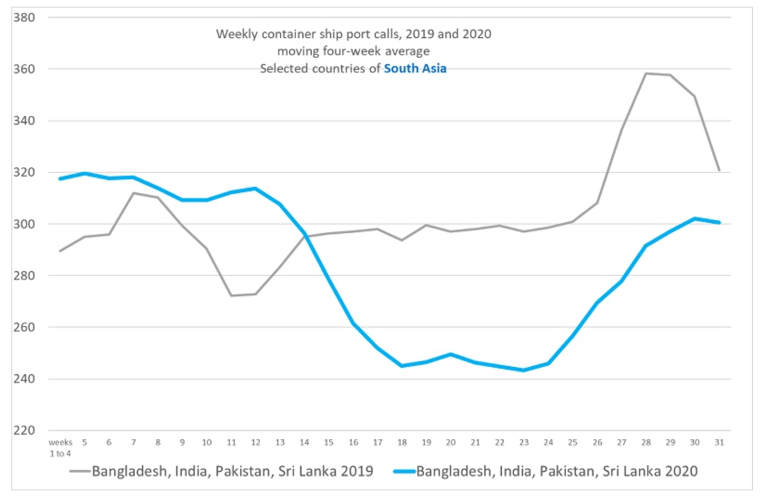The import and export of non-essential and luxury commodities are increasing. However, the industry should be cautious that new consumer behavior stands to shift with the pandemic.
There is reason to feel optimistic about the world trade, as import and export of commodities are finally going up again after having been lulled to sleep due to COVID-19.
When COVID-19 first hit, the world trade plummeted. Restaurants closed down, social activities were banned, and people stayed home in a way that we rarely see. With the threat and uncertainty of COVID-19 implications in our lives, many changed their shopping behavior. Non-essential and luxury items were no longer top priorities. Instead, many became hesitant on using money on anything more than the essentials.
That is something that has hit the import and export of commodities hard. Resulting in many industries struggling to stay afloat.
Now, months later, it seems the industry is slowly recovering. After the merchandise trade suffered a fall of 27 percent year-on-year in the second quarter of 2020, the port calls are finally looking up, according to UNCTAD calculations. By early August, the weekly calls have been rising and are only 3 percent lower than the levels one year earlier.
But what are consumers buying? And how are one of the world’s largest exporters, Asia and in particular the Indian subcontinent, fairing through these changes? We’ll have a look at that now.
Changes in import and export of commodities
It can come as no surprise, that the sale of face masks has been a big factor in statistics of the import and export of commodities in past months. Between the 1st of March and 30th of April this year alone, China exported around 27,8 billion face masks.
Other products, such as household cleaners, soap, and vitamins have seen a huge increase in sales. In both the U.S. and Europe, home hair color products have become especially popular. In the second quarter of 2020, the sales were up by more than 30 percent for companies such as L’Oreal and Henkel.
However, the import and export of other commodities have been hit hard, especially in the first six months of the pandemic. Not only has the demand for cars gone down but so has the sale on the beauty and jewelry market along with other luxury goods. In the US alone, L’Oreal’s sales of luxury beauty, professional beauty, makeup, and fragrance fell around 25% during the first half of the year.
Today’s import and export commodities on the Indian subcontinent
During the first months of the pandemic, India was placed 10th among the 20 most-affected economies due to the Corona-virus epidemic by UNCTAD. The drop in demand for non-essential goods such as clothing, shoes, and electronics hit the continent’s economies hard.
But as the demand for non-essential and luxury items is slowly recovering, it is starting to look up for India and the Indian subcontinent’s export of commodities.
Not only are people cutting back on travels, they now spend more time and money at home. With the extra time at home, many homeowners have time to do projects around the house. The strong growth rebound in import and export of commodities are especially caused by products related to home improvements and the creation of home offices, Sea-Intelligence Sunday Spotlight reports.
With worldwide lockdowns, it can hardly come as a surprise that office chairs, tables, webcams, etc. are in high demand. All of which are commodities greatly exported from the Indian subcontinent.
__________________________________________________
Do you need containers to import or export commodities from new places? With containers in more than 2500 places, you can find the one-way containers you need at xChange.

__________________________________________________
The Indian subcontinent’s export recovers
Year-on-year growth of six percent in September gives hope that the export of commodities on the Indian subcontinent is slowly recovering.
In the image below, you can see how the import and export of commodities have developed for Bangladesh, Pakistan, and Sri Lanka until the end of July.

Source: UNCTAD
This continued improvement of the import and export of commodities in the countries can also be seen in people’s buying habits. Mckinsey’s consumer sentiment surveys show that consumers in China and India are more often expecting to spend more money on non-essential and luxury products than global consumers in the US and Europe.
Particularly cars, jewelry, accessories, and footwear are among the commodities that stand to be cut back on in both the US and the EU. Impacting the economies of the countries on the Indian subcontinent.
Import and export of commodities dependent on COVID-19
Despite the positive trends in recent months, the industry should be aware of the fact the recovery is widely fueled by a change in consumer behavior. How long the demand for products that, for instance, help with house projects and building home offices will continue is unknown.
However, there is a limit to the sustainability of the demand for these products. When the demand falls, the industry must be ready to deal with the possibility of new drops in demand for imported and exported commodities in the world trade.
COVID-19 stands to change consumer behavior dependent on new restrictions, implications, and uncertainties caused by the pandemic. Therefore, it can be a good idea to stay flexible for new and growing demands.
Are you experiencing increased demand for products and need containers to ship the commodities to their destination? xChange can help you find one-way containers exactly where you need them.
Schedule a demo now, and our team will show you how our online platform can help you and your business.



